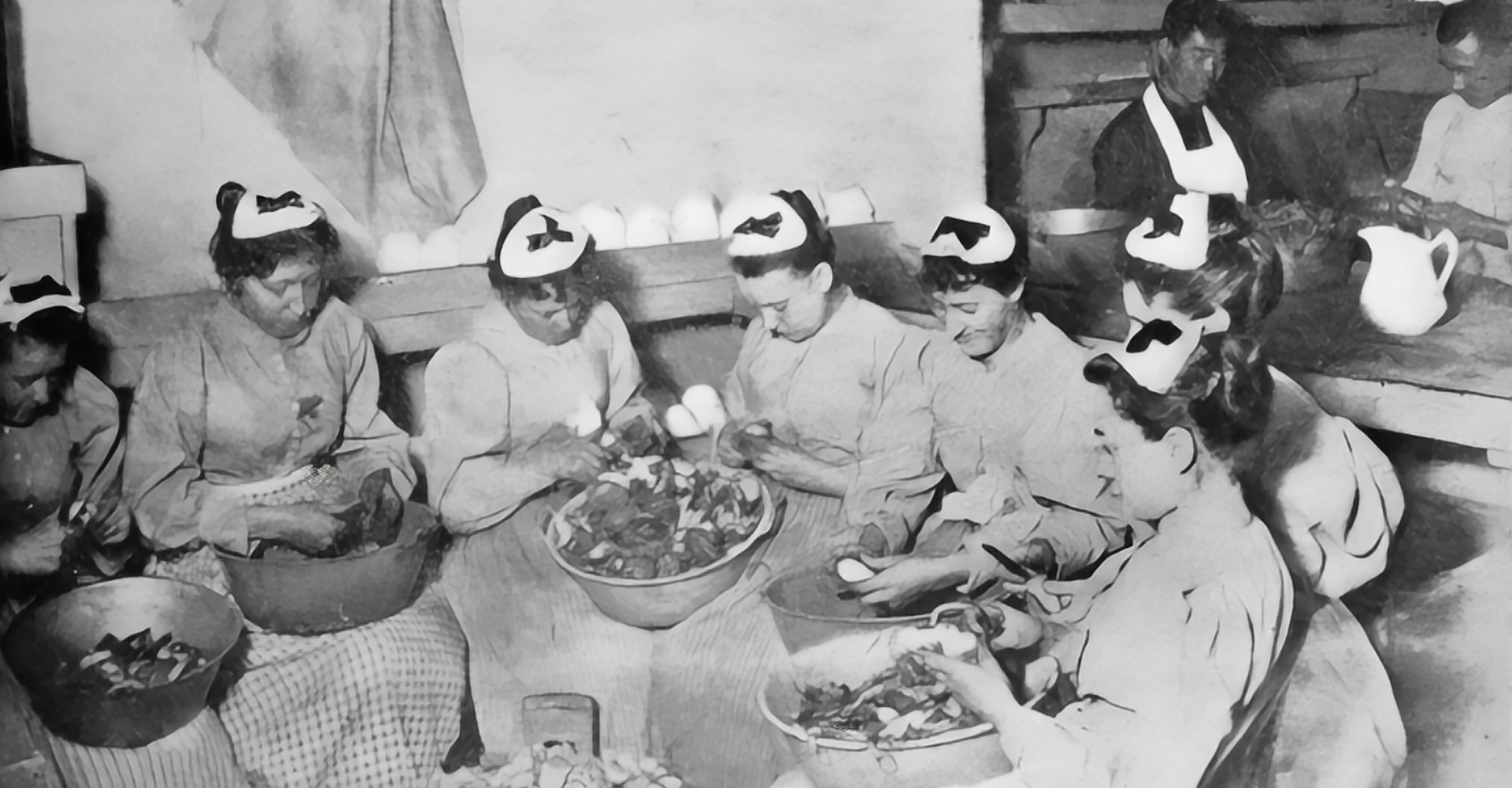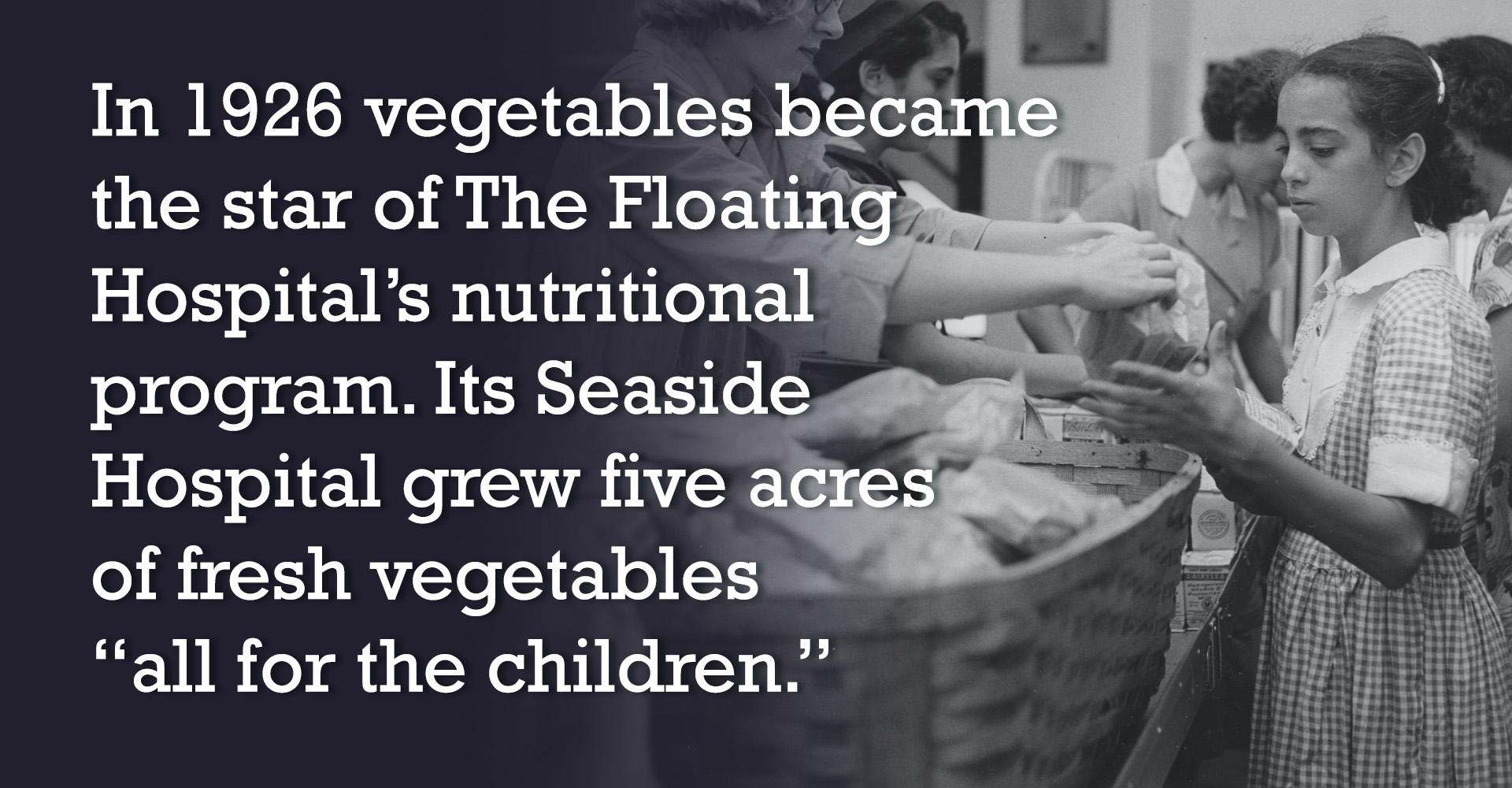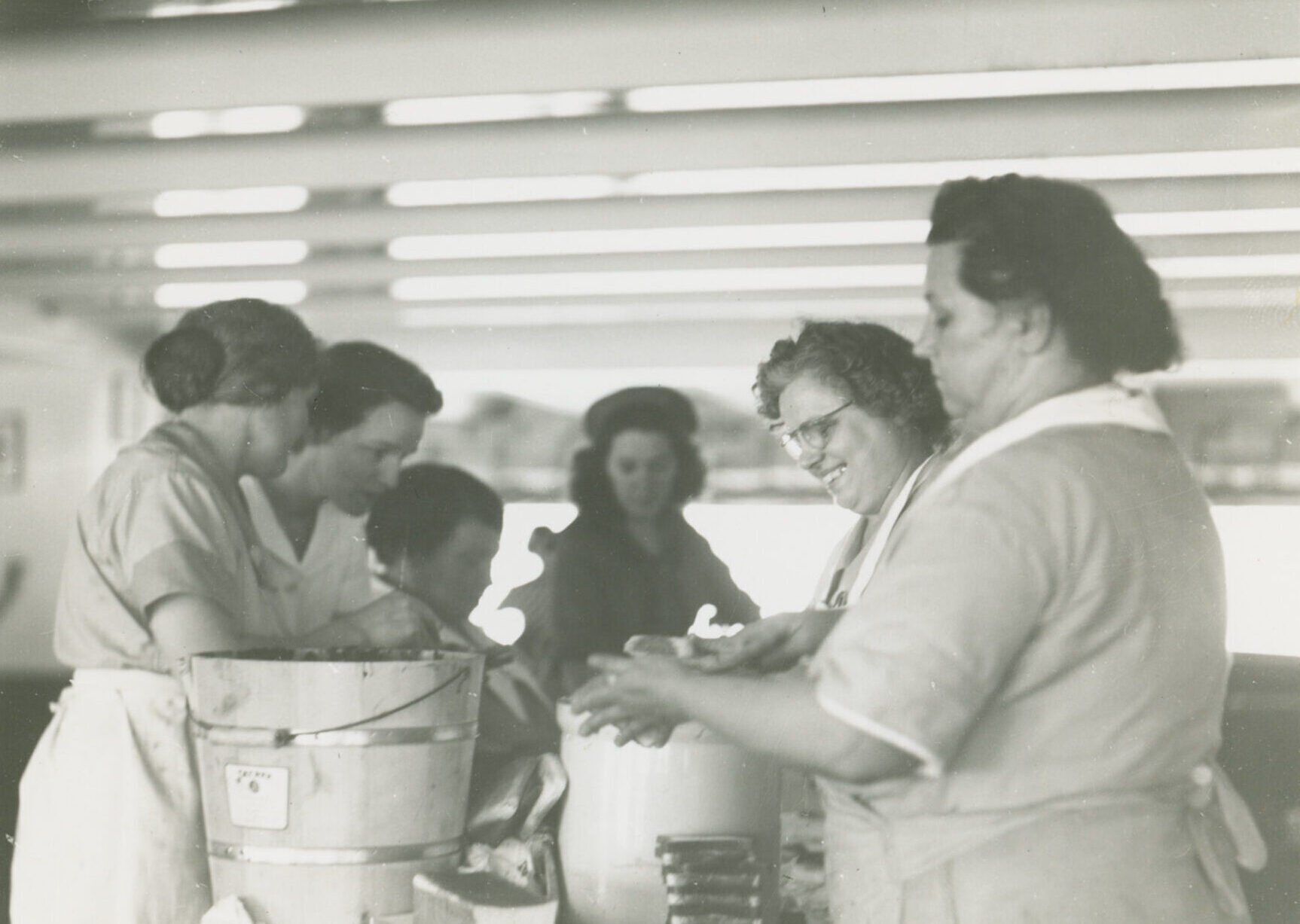
When Vegetables Were Unhealthy
Before the late nineteenth century, most Americans believed a healthy diet was rich in fat, starches, and salt. Many avoided fresh produce, assuming that fruits and vegetables would worsen their health and make them vulnerable to cholera and dysentery. Meat, potatoes, milk, and bread made up the meals served aboard the ship, and those meals were heartily appreciated by the often desperately hungry families sitting at the long wooden dining room tables.
Scientific and public thought about nutrition shifted dramatically near the turn of the twentieth century due to evolving science and the lobbying efforts of farmers and orchard owners.
In 1926, The Floating Hospital of St. John’s Guild was still invested in feeding hungry children and their family members, though vegetables had become the star of its nutritional program. The Guild’s Seaside Hospital in Staten Island set aside a portion of its seventeen-acre property for a produce farm. The hospital boasted, “Five acres of fresh vegetables, all for the children. No Canned food.”* Fresh vegetables had once been considered dangerous and unhealthy, but by the 1920s, they had eclipsed starch and fat to become an essential part of the Hospital’s meal plan.
Ideas about food and health have changed dramatically over time, and they will most likely continue to change. What foods do you think will be “healthy” or “unhealthy” fifty years from now?
Before the late nineteenth century, most Americans believed a healthy diet was rich in fat, starches, and salt. Had there been a food pyramid in those days, there would have been no room for vegetables or fruit. Many Americans avoided fresh produce, believing that fruits and vegetables would worsen their health and make them vulnerable to the ravages of cholera and dysentery.[1] At that time, few thought an apple a day would keep the doctor away.


Ideas about nutrition shifted dramatically near the turn of the twentieth century due to evolving science and the lobbying efforts of farmers and orchard owners. This change is reflected in the food served onboard the St. John’s Guild’s Floating Hospital and at its sister clinic, the Seaside Hospital.
When Maura Foder Wagner visited the Floating Hospital in 1877, the ship’s lunchtime meal was a “rich Irish stew,” full of meat and potatoes and served with bread and milk. This meal likely looked very similar to the one depicted in the photographs above, which were printed in the St. John’s Guild’s 1894 Annual Report. Passengers seemed to appreciate this heavy and hearty lunch, and Wagner noted, “One old woman was actually discovered with a pocketful of stew, which she was saving to take home.” This passenger’s willingness to endure the mess of a cloth pocket leaking stew suggests that she was desperately hungry like many other impoverished New Yorkers at the time. The Floating Hospital’s lunch must have seemed incredibly bountiful to those who were used to scarcity.
In 1926, The Floating Hospital of St. John’s Guild was still invested in feeding hungry children and their family members, but vegetables had become the star of its nutritional program. The Guild’s Seaside Hospital in Staten Island set aside a portion of its seventeen-acre property for a “farm, where fresh vegetables are grown and eaten by the children brought down for the day by the Floating Hospital.”[2] The Hospital boasted, “Five acres of fresh vegetables, all for the children. No Canned food.”[3] Based on shifting ideas about healthful eating, the St. John’s Guild had transformed its food-making practices to showcase vegetables, setting up the farm to ensure the produce was as fresh as possible. Fresh vegetables had once been considered dangerous and unhealthy, but by the 1920s, they had eclipsed starch and fat to become an essential part of the Hospital’s meal plan.
Ideas about health have changed dramatically over time, and they will continue to change. What foods do you think will be “healthy” or “unhealthy” fifty years from now?

Women preparing food aboard the LLoyd Seaman-1944
[1] Ted Steinberg, Down to Earth: Nature’s Role in American History (New York: Oxford University Press, 2009), Chapter 11.
[2] “Champions of Children” pamphlet, St. John’s Guild, 1926, 9.
[3] “Champions of Children” pamphlet, St. John’s Guild, 1926, 13.
This post featured in our monthly newsletter from March/April 2023.
To get the latest from The Floating Hospital directly to your inbox, sign up using the form below.
Other posts from this newsletter:
Bank of America finds a healthy partner in The Floating Hospital
Share This Story, Choose Your Platform!
Categories
Tags
The Floating Hospital provides high-quality healthcare to anyone who needs it regardless of race, ethnicity, religion, gender, immigration or insurance status, or the ability to pay. By providing unrestricted medical care in tandem with health education and social support to vulnerable New York City families, The Floating Hospital aims to ensure those most in need have the ability to thrive, not just survive.


